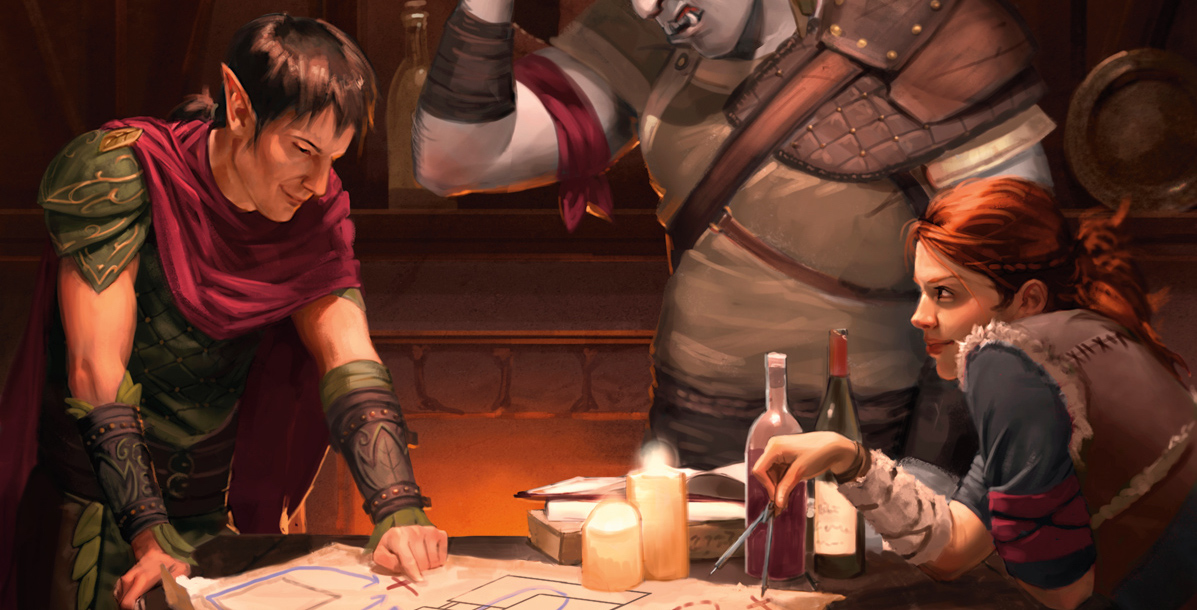The first proper wargame, called, appropriately enough, Kriegsspiel (“wargame” in German) was developed in the first half of the 19th century, initially as a curiosity. By 1860, it had achieved broad adoption as a training tool for the Prussian military. But In 1873, Lieutenant Wilhelm Jacob Meckel published a treatise citing four complaints about the game:
- The rules constrain the umpire (game master), preventing them from applying their expertise
- The rules are too rigid to model all possible outcomes in a battle, because the real world is complex and ever-changing
- The computations for casualties slow down the game and have only a minor impact on a player’s decisions anyway
- Few officers are willing to make the effort to learn the rules
If that sounds familiar, you’re not alone. The solution Meckel proposed, later expanded by Vernois in 1876, was to dispense with all the complex rules and give the umpire greater freedom to arbitrate the game. This became known as Free Kriegsspiel. A century later, Dave Arneson used a similar approach to run D&D, which he co-created alongside Gary Gygax.

Recently, this spirit has undergone something of a revival as a branch of the Old School Renaissance, sometimes called Ancient-School roleplaying or the Free Kriegsspiel Renaissance (FKR). The idea is simple: like those Prussian officers, an experienced game master uses whatever rules they deem fitting on a moment-to-moment basis to adjudicate their game. Players typically do not need to familiarize themselves with any rules, instead viewing their character as a real person and thinking logically about how to solve their problems. The saying at these tables is “play worlds, not rules.”
Here’s an example of an encounter run in an FKR style:
GM: “As you travel down the corridor, you begin to notice that the ceiling and the walls are wet. The light of your torch shimmers on the glistening stones.”
Thief: “Hmm, okay, I keep going, cautiously, and I keep an eye out on the ceiling.”
Wizard: “Can I tell if this is a magical effect?”
GM: *rolls dice behind screen* “As far as you can tell, it is ordinary water. You judge that you are probably below the water table at this depth of the dungeon.”
Barbarian: “I lick the walls.”
GM: “Interesting. The liquid is surprisingly viscous, almost like syrup. It’s sour and slightly burns your tongue.”
Barbarian, in character: “Mmm, spicy.”
Wizard: “Oh crap. Can I cast some sort of shield to defend the group?”
GM: “Sure, that seems like something a wizard of your stature should be able to muster, but the thief has gone on ahead, so you have to choose whether to shield just the thief or yourself and the barbarian.”
Wizard: “Sorry, Thief. I shield myself and the barbarian.”
Thief: “What are you-“
GM: “Suddenly, the gelatinous cube oozes through cracks in the loose-mortared ceiling. The wizard’s shield crackles and stops the ooze from reaching himself or the barbarian, but the thief is caught in the sticky acid.” *rolls* “You are burned, but you manage to gulp a breath of air before the creature absorbs you.”
Thief: “Oh crap, can I try to struggle free?”
GM: “Sure, you struggle, but you’re stuck in place for the moment. Wizard, you’re busy concentrating on the shield spell. Barbarian, what do you do?”
As you can see, in this example there is no initiative roll, no attack rolls, no rolls made at all by players in fact. There is no set spell list for the wizard, nor any class-specific features for the thief. Instead, the GM simply takes what strengths these characters would realistically have into account whenever they try to do something. All rolls are made behind the screen and are simply the GM consulting the oracle of probability whenever they feel it is appropriate. Here’s an example table for how the GM might resolve the outcome of uncertain tasks:
| Difficulty | Minimum to succeed on 2d6 | Success chance |
| Easy | 3 | 97.2% |
| Moderate | 7 | 58.3% |
| Hard | 9 | 27.8% |
| Very Hard | 10 | 16.7% |
Or if you prefer rolling a d20, you could get roughly the same success chance with these DCs:
| Difficulty | Minimum to succeed on d20 | Success chance |
| Easy | 2 | 95% |
| Moderate | 9 | 60% |
| Hard | 15 | 30% |
| Very Hard | 18 | 15% |
Instead of doing a bunch of math with bonuses, the GM simply needs to decide “how hard is this task for this character in this moment?” Is the barbarian trying to leap across a 10 foot gap? Easy. The wizard? Hard. The cleric in heavy armor? Oof. That could be very hard. Might want to make that clear to them before they try to do it. Do they pray to their god for strength before making the jump? Perhaps their faith empowers them and brings it down to a hard or even moderate roll!
Remember, the whole point of this style of play is that there are no set rules. The above is just an example. The GM could decide to have the players roll the dice, or to have them write down spells in advance, or to have to pray to a god for magical power, or whatever makes sense for the setting and the characters. What’s key is that the players here are focused not on their character sheets, but on what makes sense within the fiction. This style places a heavy emphasis on trust between players and GM as well as player skill. In the above example, the Wizard player’s ability to deduce that the sour, sticky slime might be a gelatinous cube is based on their familiarity with the setting, in which such a creature has presumably been established.
Needless to say, this style is not for every table, or for every game. As Questing Beast put it, FKR simultaneously demands both a lot less and a lot more of the GM and the players. But in my opinion, it’s worth a try, because the best sessions I’ve ever experienced have been the ones that flowed like butter, where we seldom if ever consulted a book, and the story arose naturally out of the fiction.
